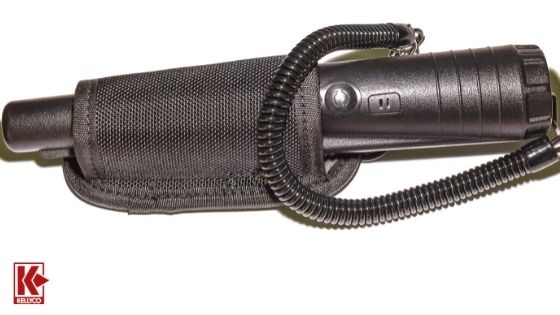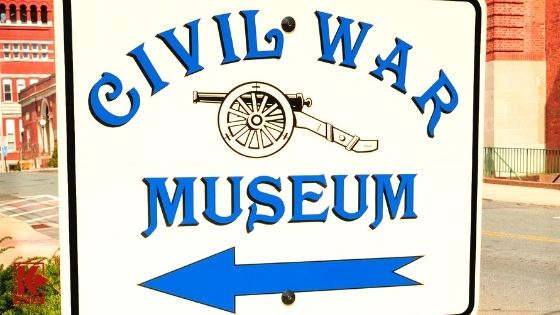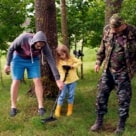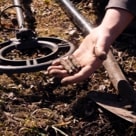Metal Detecting Civil War Relics
Published by Carolyn Yohannes on 02/01/20
The Civil War was an important part of our country’s history, and many detectorists love metal detecting Civil War battlefields. One of the goals is often to hunt for Civil War relics to preserve history. In addition to doing your homework and researching prime sites where battles of the war were fought, you need to have the right equipment and the knowledge of what to hunt.
Where to Find Civil War Relics

Go Where The Soldiers Went
The key to metal detecting Civil War sites and finding relics is to go where the soldiers went. You’re going to have to do some research to locate prime spots. Comb through internet sites and books about the Civil War and pay attention to areas where soldiers followed trails or roads, where they set up camps, and where there were skirmishes or battle (even the small ones). If you know any local historians, they are often even better sources than books and the internet. Just keep in mind that historians are protective of historical sites so you may have to reassure them that you will dig respectfully.
Have a Variety of Search Coils for Relic Hunting
In order to do a thorough search of Civil War sites, you may need more than one type of search coil. Different sized coils have different purposes. Detectors usually come with a search coil that is between 8 and 10 inches, which is considered mid-sized. This size is great for general searching, but there are coils that are both smaller and larger than that. When you use a larger coil (11-12 inch) you can cover more ground in less time. More importantly though, you’ll gain additional depth when you’re operating with larger coils.
That said, you shouldn’t always use a bigger coil. Smaller coils have benefits as well – especially if you are hunting in an area with a lot of trash. When the site is in a place where people have dropped lots of metal, a smaller coil will ensure that you don’t miss any relics that are being covered up by the junk surrounding them.
Bring the Right Shovels and Diggers
Civil War relics were buried a long time ago. That means that you will likely have to dig through all kinds of dirt to get to them. Some areas may be easy to dig, but some may be much harder. Make sure that you have some heavy-duty digging tools with you for when you encounter hard ground. It’s also a good idea to have a shovel or trowel with a serrated edge. You’ll find that in some areas where Civil War battles took place, the landscape has changed dramatically. There may be full-grown, mature trees with extensive root systems where there once was an open landscape. Serrated-edged tools will help if you have to cut through those roots to find your targets.
Use a Pinpointer While Metal Detecting for Civil War Relics

Use A Pinpointer
This is a good rule of thumb for every search, not just when you’re looking for Civil War relics. A good pinpointer is an indispensable tool for metal detecting. It narrows down the exact location of your targets, cuts down on your digging time, and leaves smaller holes to fill in. If you purchase a submersible pinpointer, you will also be able to use it along the edges of creeks and streams, which you will undoubtedly run into when you’re looking for Civil War items. Not sure which pinpointer to choose? Some of the best pinpointers are the Garrett Pro-Pointer AT or the Minelab Pro-Find 35. For more recommendations, check out our pinpointer guide!
I Found Civil War Relics — Now What?
When you’re hunting on Civil War sites, you will likely come across the most common finds: bullets, buttons and buckles from soldiers’ uniforms, and pieces of their equipment. But if you do your research — and with some luck — you could find major treasure like canteens, rifles, and even bayonets. So how do you authenticate what you’ve found? You have a few options available to you.
- Your own research – This is a good place to start. Using Civil War artifact books or doing a Google search may help you figure out what your item is. Keep in mind that what you find may only be a piece of a larger item. For example, one thing that you might find is a knapsack hook. Without seeing the whole knapsack, the hook may be hard to identify.
- Other detectorists – One of the most valuable sources you have is other detectorists. Metal detecting clubs usually have one or more members who are authorities on Civil War relics. This method of authenticating is really useful because you are able to show the item in person.If the other detectorist is able to identify the item as a genuine Civil War relic, he will likely know where you can take it to have it authenticated.
- Civil War museums – Museums that display artifacts from the Civil War will likely be able to help

Civil War Museum
you identify what your item is. They often have a historian on site who you will be able to talk to and show your item. You can also ask where they have their artifacts authenticated.
- Civil War Antiques Preservation Society – You can get information straight from the horse’s mouth. The Civil War Antiques Preservation Society has authenticators on staff who will look at your item and provide you with their feedback. It’s as easy as sending them an email (be sure to send several photos of your item, from different angles). They will email or call you to discuss the item within three days.
If you plan on keeping your Civil War finds for you own personal collection, you may not care whether they are authenticated or not. It will take some time to do it and in some cases, there may be expenses associated with authentication. However, if you plan to sell your item, it’s a smart thing to do.
Final Word
Keep in mind that many federally recognized Civil War battle sites prohibit metal detecting. Still, many soldiers weren’t always on protected battlefield sites like Gettysburg. There are many places where engagements took place on private property, so just be sure to ask for permission before you hunt. Think like a soldier, use your resources, follow our metal detecting tips, and you can find great spots to hunt and find the relics you’re looking for.

